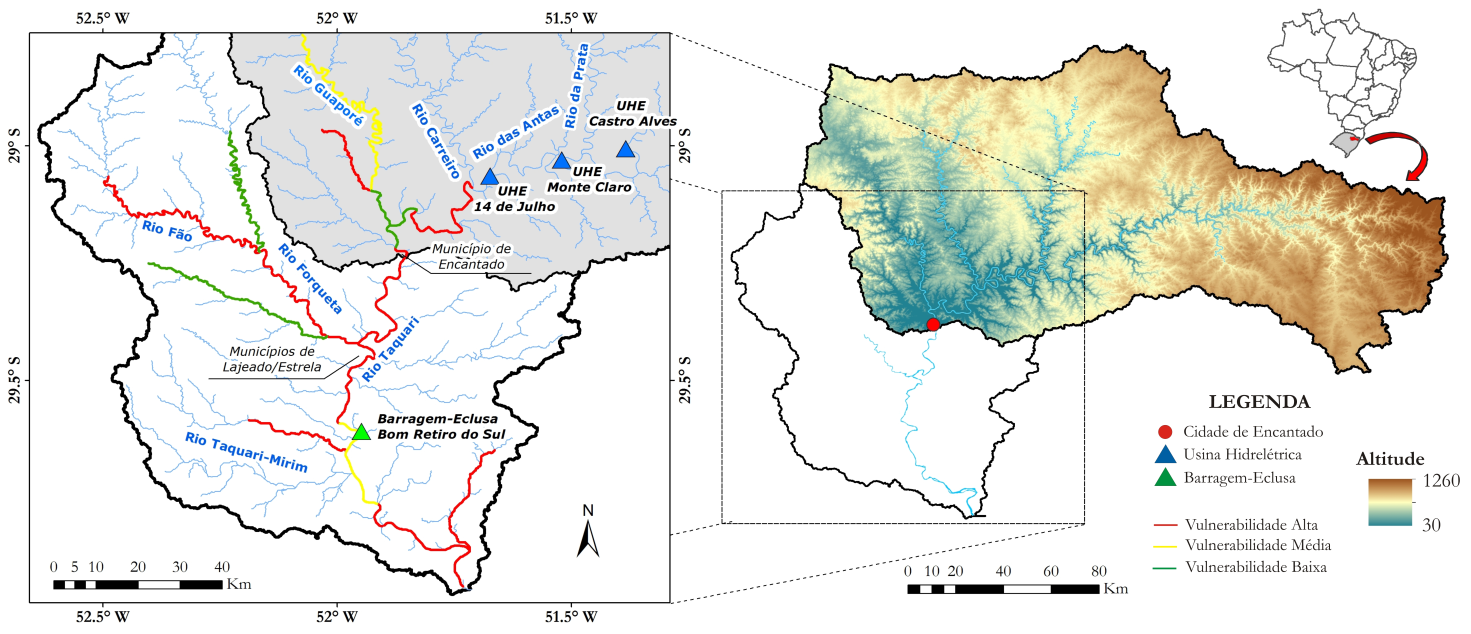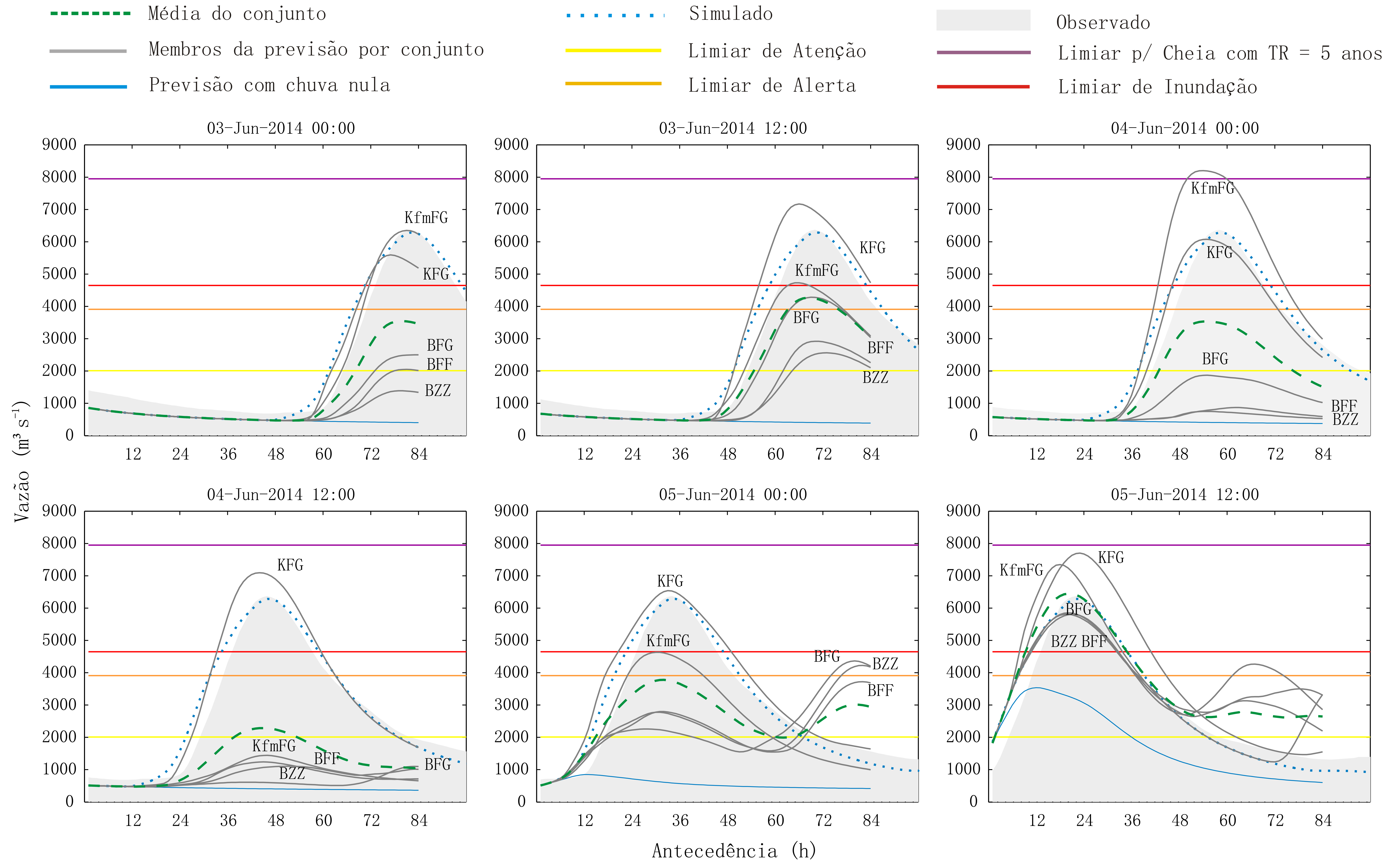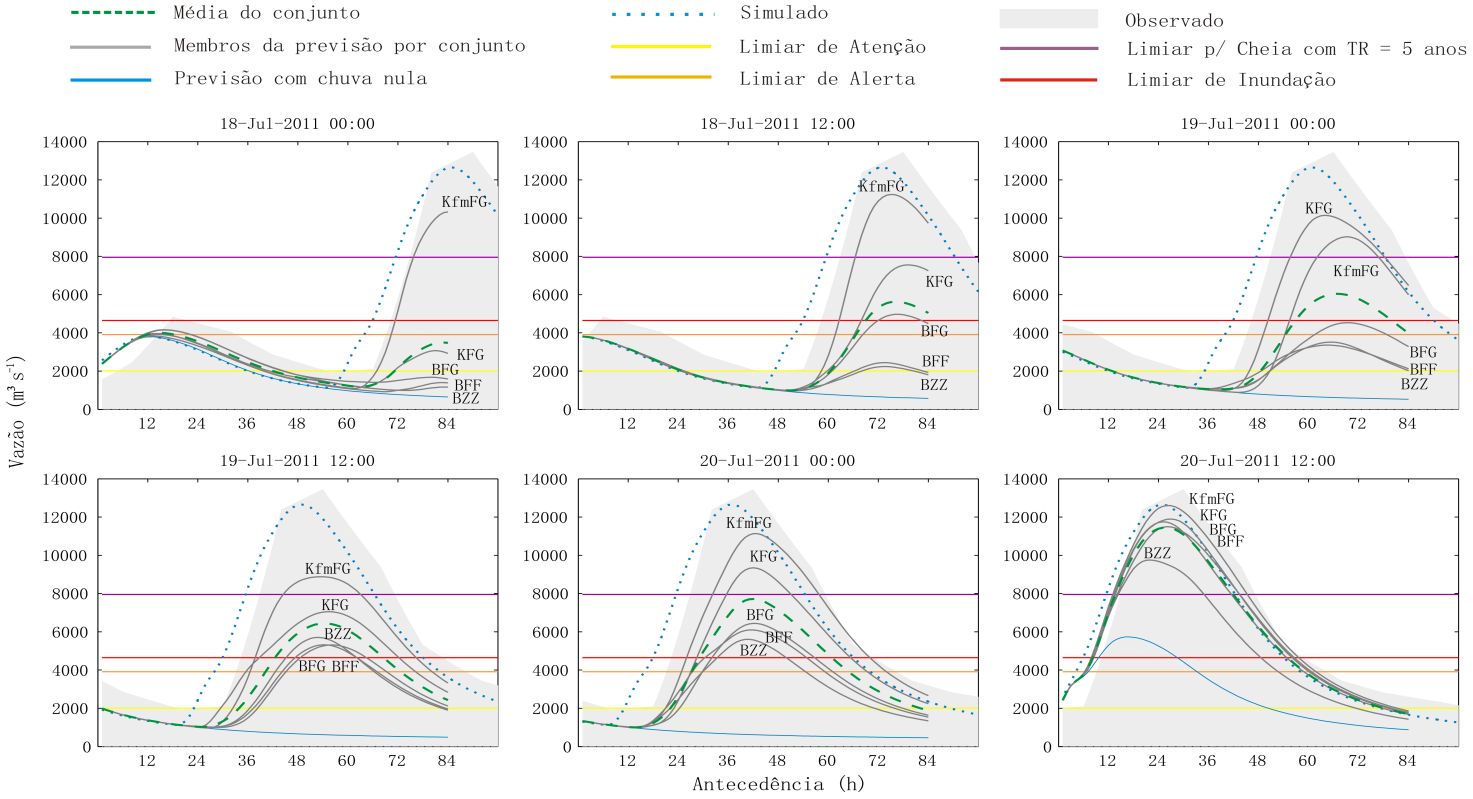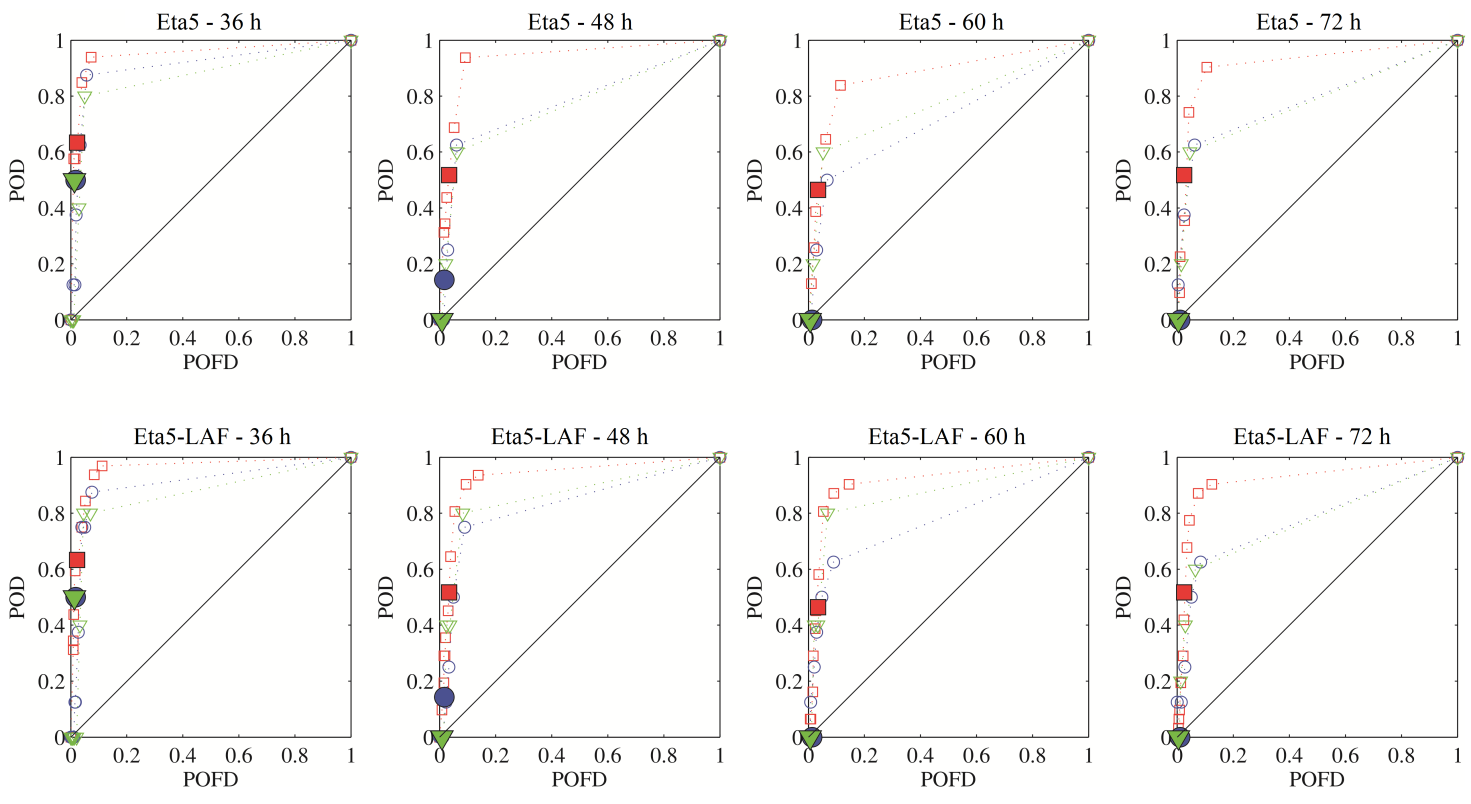Evaluation of an operational high resolution HEPS to a southern Brazilian basin
Contributed by Vinicius Siqueira, member of the LSH Research Group Guest Columnist Team.
CPTEC is the Brazilian center for weather and Climate Studies (Centro de Previsão de Tempo e Estudos Climáticos). It has recently developed a high-resolution version of the Eta meteorological model (5 km), with five members combining different parameterization schemes and boundary conditions.
Currently, the ensemble forecasts are operationally issued at the Brazilian National Institute for Space Research (INPE) twice a day (00 UTC and 12 UTC), and are provided with temporal resolution and lead time of 1 hour and 72 hours, respectively.
In this context, the study presented here (Siqueira et al., 2016, in press) aimed to assess the quality of ensemble flood forecasts generated using this high resolution Eta model version at Taquari-Antas river basin, and its potential to provide additional information to a local Flood Alert System.
The basin is a steep basin located in a mountainous region in southern Brazil, and due to its geological characteristics and radial drainage pattern, streamflow is largely dominated by surface runoff with high peak flows and short duration times. Climate is sub-tropical and there is no seasonality, so floods can occur in any month of the year but mostly in austral winter and spring (June to October). Figure 1 shows the location of the Taquari-Antas basin.
Figure 1. Location of Taquari-Antas Basin and Encantado city (red dot) in Southern Brazil. Reaches marked in red are critical flood-prone areas.
The hydrological model MGB-IPH was coupled to the high-resolution meteorological EPS Eta model, as well as to the deterministic version of Eta regional model. On a single event evaluation, the peak discharge was reasonable well predicted by at least one ensemble member, in nearly all forecasts, with a good prediction of the flood timing for the considered lead times (Figures 2 and 3).
Figure 2. MGB-Eta Hydrological Ensemble Forecasts for a 1-2 year flood occurred in Encantado city (Taquari-Antas basin).
Figure 3. MGB-Eta Hydrological Ensemble Forecasts for a 40-year flood occurred in Encantado city (Taquari-Antas basin).
In a comparison with deterministic forecasts, the ensemble ones showed higher accuracy and higher probability of detection (POD) for the reference thresholds, preserving false alarm rates at reasonably low levels (Figure 4).
An overall tendency of underestimation was also identified, with most observations falling between the higher ranks of the ensemble. Furthermore, the combination of previous forecasts (t-12h) with the recent ones leads to a slight increase of ensemble spread and POD, despite the performance reduction in terms of accuracy and bias for the ensemble mean.
Figure 4. ROC curves of the forecasting systems. Symbols outlined in red, green and blue are related to watch, alert and flooding thresholds, respectively. The deterministic forecasts are shown by filled symbols, following the same coloring scheme for the reference thresholds.
Results suggest that there is a benefit in having hydrological ensemble forecasts obtained from the high resolution EPS Eta model, which is starting to be used as complementary information to a local Flood Alert System (Chagas et al. 2014), supporting pre-alert issues and Civil Defense internal planning actions.
References:
- CHAGAS, A.; CASTILHO, PEDROLLO, M.; GERMANO, A.; SOTERIO, P. The Warning Flood System in Taquari River Basin. In: 6th International Conference in Flood Management, Sao Paulo, Brazil. Proceedings… Sao Paulo: [s.n.] 2014.
- CHOU, S. C.; BUSTAMANTE, J. F.; GOMES, J. L. Evaluation of Eta Model seasonal precipitation forecasts over South America. Nonlinear Processes in Geophysics, v. 12, n. 4, p. 537–555, 2005.
- SIQUEIRA, V. A.; COLLISCHONN, W. ; FAN, F. M.; CHOU, S. C. . Flood ensemble forecast from operational Eta model provisions in the basin of the Taquari-Antas / RS. Revista Brasileira de Recursos Hídricos, 2016 (in press).




0 comments